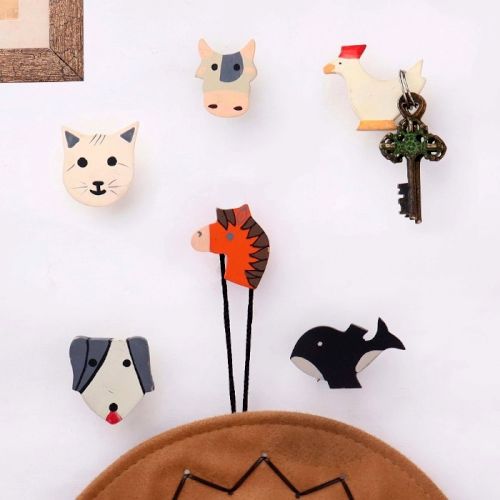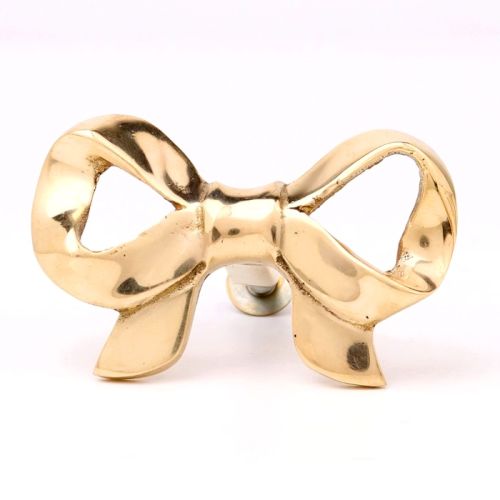What are ceramic pots or Pottery?
Ceramic pots are containers made from natural clay. They're molded and fired at extreme temperatures to produce sturdy and usually ornamental objects. These pots come in all shapes, sizes, and finishes for cooking, baking, and gardening. They are made from different kinds of clay, each with its own characteristics and beauty. Most ceramic pots are oven and microwave-safe because they are heat resistant. They are food-grade, meaning they won't react with food or change the flavors, making them safe for cooking or storing food. Additionally, ceramic pots are aesthetically pleasing, with excellent designs and glazes, and look good in a kitchen or garden. They also help control soil moisture in gardening (if made from porous materials such as terracotta). Ceramic pots are valuable and attractive, which explains their widespread use.
What are the benefits of using ceramic kitchenware?
Ceramic kitchenware is valued for its safety when cooking and baking because it is safe to use. It spreads heat evenly, helping achieve consistent cooking results. Ceramic dishes are colorful and decorated; they not only look pretty but also make food look more appetizing. Many ceramic items are dishwasher-safe, making cleanup easier. When used correctly, ceramic cookware is strong and doesn't leach dangerous chemicals into food, unlike many metal pots.
Is ceramic cookware safe for use in the oven and microwave?
Using ceramic cookware in the oven and microwave is generally safe, but it is important to follow the manufacturer's guidelines. Ceramic cookware is excellent for baking because it can withstand high heat, but it can crack if suddenly cooled. Also, only use ceramic in the microwave if it specifically says it is microwave-safe.
How do you care for and clean ceramic kitchenware?
To take care of ceramic kitchenware, hand wash with mild soap and a soft sponge to avoid scratching. Avoid using abrasive cleaners and scrubbing pads. For tough stains, soak the item in warm, soapy water before cleaning. If the item is dishwasher-safe, place it on the top rack. Let ceramic items cool before washing and store them safely to prevent chipping. Avoid extreme temperature changes to extend their lifespan.
Are there any specific cooking techniques that work best with ceramic pots and pans?
Ceramic cookware is best for slow cooking, baking, and simmering. It is great for gentle cooking and works well with stews and casseroles. Additionally, it is suitable for baking, providing even heat distribution for items like cakes and bread. Avoid high heat, as it can damage the ceramic surface; instead, use medium to low heat settings.
What should I look for when purchasing ceramic kitchenware?
When buying ceramic kitchenware, consider the quality of the ceramic and the glaze used. Look for items labeled as food-safe and free from harmful chemicals like lead and cadmium. Check for even thickness, which indicates durability. Ensure the cookware is oven and microwave-safe, and consider whether it is dishwasher-safe for easy cleaning. Aesthetics and design are also important, so choose pieces that complement your kitchen style.
Can ceramic kitchenware go from the freezer to the oven?
Not all ceramic kitchenware is designed to withstand extreme temperature changes. While many ceramic dishes can be used in the oven, transferring them directly from the freezer to a hot oven can lead to cracking due to thermal shock. To prevent this, allow the dish to sit at room temperature for a while before placing it in the oven. Always refer to the manufacturer’s instructions regarding temperature limits.
How does the cooking performance of ceramic cookware compare to non-stick options?
Ceramic cookware offers a nonstick surface without the chemicals often found in traditional nonstick coatings. It provides good heat distribution, making it effective for cooking a variety of dishes. However, it may not be as nonstick as Teflon or other synthetic coatings, especially at higher temperatures. Food may stick if the cookware is not adequately preheated or if too little oil is used. Overall, ceramic can be a healthier alternative, but its performance may vary depending on the brand and quality.
Are there any health concerns associated with ceramic glazes?
Some ceramic glazes may contain harmful substances like lead or cadmium, particularly in older or imported items. To mitigate health risks, look for ceramics labeled as "lead-free" and "food-safe." Most reputable manufacturers follow strict regulations regarding the safety of their glazes. It’s also wise to avoid using older or handmade ceramics for food if you’re unsure of their glaze safety.
What types of dishes are best suited for ceramic bakeware?
Ceramic bakeware is ideal for various dishes, including casseroles, lasagnas, baked pasta, and desserts like cobblers and cakes. Its ability to retain heat makes it excellent for slow-cooked meals and baked goods that require even cooking. Additionally, ceramic bakeware can go from oven to table, enhancing the presentation of your dishes with its attractive designs.
How do I avoid scratching or damaging ceramic kitchenware?
To avoid damaging ceramic kitchenware, use utensils made of wood, silicone, or plastic instead of metal, which can scratch the surface. Avoid stacking ceramic items unless specifically designed to nest, and use protective padding between pieces when storing them. Always follow the manufacturer’s care instructions to ensure the longevity of your cookware.
How do you maintain ceramic kitchenware?
Handle ceramic items carefully by lifting them from the base rather than the rim to reduce stress on the edges. Use silicone utensils to avoid scratching the surface. For stain removal, soak the item in warm, soapy water or apply a paste of baking soda and water to scrub stained areas gently. Regularly inspect your ceramic kitchenware for chips or cracks, as damaged items may pose contamination risks if used for food preparation. Additionally, use ceramic cookware on low to medium heat settings, as high heat can damage some pieces. By following these care and maintenance tips, you can help ensure that your ceramic kitchenware remains functional and beautiful for years.
What are the advantages of using ceramic planters for indoor plants?
Ceramic planters are popular for indoor plants due to their aesthetic appeal and ability to regulate temperature. They provide good insulation, keeping soil temperatures stable. Their weight helps prevent tipping over, making them suitable for taller plants. Additionally, ceramic can absorb moisture, benefiting plants that prefer consistent watering. Many ceramic pots come with attractive designs, enhancing home decor.
How do ceramic planters compare to plastic or metal pots?
Ceramic planters offer superior durability and aesthetics compared to plastic pots, which can fade and crack over time. Unlike metal pots, which can heat up quickly and cause soil temperatures to fluctuate, ceramic provides better insulation. While ceramic pots can be heavier, they are often more visually appealing and give a more natural environment for plant roots.
What features should I consider when choosing a ceramic planter?
When selecting a ceramic planter, consider drainage holes to prevent waterlogging, as excess moisture can harm plant roots. Look for pots with a suitable size for your plant's growth. The planter's weight is also important, especially for larger plants, to ensure stability. Aesthetics like color and design should align with your decor style. Additionally, consider whether the pot has a saucer to catch excess water.
Are there drainage options available for ceramic planters?
Many ceramic planters come with built-in drainage holes that prevent overwatering and root rot. If a ceramic planter does not have drainage holes, you can use it as a decorative cover pot, placing a smaller pot that has drainage inside. Alternatively, you can drill holes in the bottom of non-glazed ceramic pots, but this requires careful handling to avoid cracking.
Can I use ceramic planters outdoors, and what should I consider for outdoor use?
Yes, many ceramic planters can be used outdoors. However, choosing frost-resistant ceramic is essential if you live in colder climates, as freezing temperatures can crack unglazed or low-quality ceramic. Ensure the planter has adequate drainage, especially if exposed to rain. Be mindful of direct sunlight, as some ceramic colors may fade over time. Positioning pots in shaded or partially sunny areas can help maintain their appearance.
How do ceramic planters help with moisture retention for plants?
Due to their porous nature, ceramic planters, mainly if they are unglazed, can assist with moisture retention. They can absorb excess moisture and release it slowly, helping to maintain consistent soil humidity. This characteristic benefits plants that thrive in evenly moist conditions, reducing the watering frequency. However, it’s important to monitor soil moisture levels to prevent overwatering.
What styles and designs are popular in ceramic planters?
Popular styles of ceramic planters include traditional, modern, and rustic designs. Hand-painted or glazed pots often feature intricate patterns and colors, reflecting cultural heritage. Minimalist designs with solid colors are favored in contemporary decor. Textured finishes and geometric shapes are also trending, allowing planters to serve as decorative pieces in any interior or exterior setting.
How can I decorate or personalize ceramic planters for my home?
To match your home's decor, you can personalize ceramic planters using paint, stencils, or decals. Consider using waterproof paint or sealants if you’ll be using them outdoors. Adding decorative stones, pebbles, or plants complementing the pot can enhance its appearance. You could also wrap the pot in jute or twine for a rustic touch or use plant stands to elevate the planters and create visual interest.
What are some common mistakes to avoid when using ceramic planters?
Common mistakes include overwatering, which can lead to root rot, especially if drainage needs to be improved. Avoid using ceramic pots without drainage holes for sensitive plants. Not considering the weight of more giant ceramic planters can also lead to issues if they tip over. Lastly, placing ceramic pots in direct sunlight without considering their heat absorption can cause stress to plants, especially in extreme heat.
How do I clean and maintain ceramic planters to prevent algae or mold growth?
To clean ceramic planters, use mild soap and water, scrubbing gently to avoid scratching the surface. If you notice algae or mold, a solution of water and vinegar can help remove it. Ensure planters have good drainage to prevent water accumulation, encouraging mold growth. Regularly inspect your plants and pots for signs of moisture retention issues and clean them as needed to maintain a healthy environment.


.JPG?ver=1.7)
.JPG?ver=1.7)
.JPG?ver=1.7)
.JPG?ver=1.7)
.JPG?ver=1.7)
.JPG?ver=1.7)
.JPG?ver=1.7)
.JPG?ver=1.7)
.jpg?ver=1.7)
.JPG?ver=1.7)
.JPG?ver=1.7)
.JPG?ver=1.7)
.JPG?ver=1.7)
.JPG?ver=1.7)
.JPG?ver=1.7)
.JPG?ver=1.7)
.JPG?ver=1.7)
.JPG?ver=1.7)
.JPG?ver=1.7)
.JPG?ver=1.7)
.JPG?ver=1.7)
.JPG?ver=1.7)
.JPG?ver=1.7)
.JPG?ver=1.7)
.JPG?ver=1.7)
.JPG?ver=1.7)
.JPG?ver=1.7)
.JPG?ver=1.7)
.JPG?ver=1.7)
.JPG?ver=1.7)
.JPG?ver=1.7)
.JPG?ver=1.7)
.JPG?ver=1.7)
.JPG?ver=1.7)
.JPG?ver=1.7)
.JPG?ver=1.7)
.JPG?ver=1.7)
.JPG?ver=1.7)
.JPG?ver=1.7)
.JPG?ver=1.7)
.JPG?ver=1.7)
.JPG?ver=1.7)
.JPG?ver=1.7)
.JPG?ver=1.7)
.JPG?ver=1.7)
.JPG?ver=1.7)
.JPG?ver=1.7)
.JPG?ver=1.7)
.JPG?ver=1.7)
.JPG?ver=1.7)
.JPG?ver=1.7)
.JPG?ver=1.7)
.JPG?ver=1.7)
.JPG?ver=1.7)
.JPG?ver=1.7)
.JPG?ver=1.7)
.JPG?ver=1.7)
.JPG?ver=1.7)
.JPG?ver=1.7)
.JPG?ver=1.7)
.JPG?ver=1.7)
.JPG?ver=1.7)
.JPG?ver=1.7)
.JPG?ver=1.7)
.JPG?ver=1.7)
.JPG?ver=1.7)
.JPG?ver=1.7)
.JPG?ver=1.7)
.JPG?ver=1.7)
.JPG?ver=1.7)
.JPG?ver=1.7)
.JPG?ver=1.7)
.JPG?ver=1.7)
.JPG?ver=1.7)
.JPG?ver=1.7)
.JPG?ver=1.7)
.JPG?ver=1.7)
.JPG?ver=1.7)
.JPG?ver=1.7)
.JPG?ver=1.7)
.JPG?ver=1.7)
.JPG?ver=1.7)
.JPG?ver=1.7)
.JPG?ver=1.7)
.JPG?ver=1.7)
.JPG?ver=1.7)
.JPG?ver=1.7)
.JPG?ver=1.7)
.JPG?ver=1.7)
.JPG?ver=1.7)
.JPG?ver=1.7)
.JPG?ver=1.7)
.JPG?ver=1.7)
.JPG?ver=1.7)
.JPG?ver=1.7)
.JPG?ver=1.7)
.JPG?ver=1.7)
.JPG?ver=1.7)
.JPG?ver=1.7)
.JPG?ver=1.7)
.JPG?ver=1.7)
.JPG?ver=1.7)
.JPG?ver=1.7)
.JPG?ver=1.7)
.JPG?ver=1.7)
.JPG?ver=1.7)
.JPG?ver=1.7)
.JPG?ver=1.7)
.JPG?ver=1.7)
.JPG?ver=1.7)
.JPG?ver=1.7)
.JPG?ver=1.7)
.JPG?ver=1.7)
.JPG?ver=1.7)
.JPG?ver=1.7)
.JPG?ver=1.7)
.JPG?ver=1.7)
.JPG?ver=1.7)
.JPG?ver=1.7)
.JPG?ver=1.7)
.jpg?ver=1.7)
.jpg?ver=1.7)
.jpg?ver=1.7)
.jpg?ver=1.7)
.jpg?ver=1.7)
.jpg?ver=1.7)
.jpg?ver=1.7)
.jpg?ver=1.7)
.jpg?ver=1.7)
.jpg?ver=1.7)
.jpg?ver=1.7)
.jpg?ver=1.7)
.JPG?ver=1.7)
.jpg?ver=1.7)
.JPG?ver=1.7)
.jpg?ver=1.7)
.jpg?ver=1.7)
.jpg?ver=1.7)
.jpg?ver=1.7)
.jpg?ver=1.7)
.jpg?ver=1.7)
.jpg?ver=1.7)
.jpg?ver=1.7)

